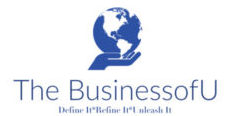
The great leaders know that change is always happening, they accept it, they embrace it, and they fashion it to achieve their vision of the organization. They do not just talk about the change that is needed, they become the change that is needed. This is not about changing your Vision, or Your Mission, or even your Purpose or your Goals, its about changing the way you will go about achieving them.
Year after year business become stagnant, left behind by their competition or fail because they either choose not to adapt to the changing environment, or the management of their organizational change processes are substandard and ineffective. The rapid pace with which internal and external factors are affecting businesses, businesses should always be on the ready to improvise and change plans to maintain their competitiveness. It is vital to the immediate and long-term success of any business to have a structured change management system, that will keep it steady and stable when faced with blindsided changes that can come from technological advancements and local and global economies.
Much like fuel is a necessity to the movement of vehicles, change should not be looked at as the enemy but should be considered a required component to ensure the optimization of a company’s operational performance. For instance, internally, the continued pursuit of enhancing the customer service experience for any business can and may include changes to training methods, policies and procedures, staff deployment and responsibilities, and even stretch its tentacles into the corporate culture. Any business that wants to grow its market share and maintain a competitive presence should never underestimate the value of these seemingly small, and often repetitive adjustments.
Internal changes are often easier to handle when compared to those external changes which can hit you like sucker punches to the jaw. Government laws, new competition, major utility outage issues and environment and weather issues. Without a doubt, it pays to be proactive by having a playbook that maps out the blueprint of a basic change management strategy that will guide you through the phases of (1) Recognition, (2) Execution and (3) Wrap-up. Ensuring that your change management strategy is being utilized without fail does not only benefit the organization by assuring positive outcomes it also diminishes the negative affect changes can have on the staff.
Below are tips that can help to better implement the 3-phase change management process to ensure that the initiative is effective, strengthens your business, and creates more efficient and effortless transitions.
- Recognition
Its simple if you don’t know you can’t act. (A) Staying vigilantly focused on all aspects of the business. In some cases, being meticulous to a fault when reviewing internal audits, customer surveys, employee exit surveys etc. (B) Schedule out of office on the floor time and take this opportunity to conversate with staff and patrons, focus intently on the workflow of the operations and be a customer during peak times, this is where the rubber often meets the road. (C) Just as important as it is being on the floor, being active in the community is vital. Become active in the Chamber of Commerce, Industry related associations, and nonprofit organizations. By utilizing all these proactive methods, you will always stay up to date on what is happening and anything new that may be coming through the pipeline.
- Execution
The most important factor in executing the change process requires that the deliverer believes in the change. (A) To believe in it requires that he or she knows all about it so they can articulate clearly, the reasons, benefits, goals and responsibilities required to make it happen. (B) Staff involvement in the process is critical. Involve them wherever possible from the beginning to the completion. (C) Never shy away or deliberately become evasive at the hard questions be prepared to answer them honestly, persons need to know the full scope of what will be required, so they can process how it affects them and what adjustments they may have to make. (D) Never start what you cannot finish, ensuring that you have all financial, equipment/materials and training resources needed prior to starting the process will contribute largely to a successful outcome. (E) Understand that resistance will occur, it’s a natural part of the process be prepared, try to alleviate as many of the obstacles as possible, and constantly monitor the process to try and address those that pop up, quickly and aggressively.
- Wrap-Up
In the end the change must stay true to the businesses vision, mission and corporate culture. (A) True and lasting change will never happen if it is not rooted within either of the three. Recognize and accept that it is a process, some changes take longer than others to become interwoven, along the way you may have to improvise, adapt, and revise to improve and achieve your desired results. (B) Because the process can be painstaking be sure to celebrate the success along the way, this increases greater buy-in, keeps motivation levels high and minimizes resistance. (C) Even after the change begins pulsating through the veins of the business, depending on what it is ensure that it is assigned to a checklist and placed in the internal audit program. Remember, “what gets measured gets improved.” ~Robin S. Sharma~
Keith M. Dean
CEO & Founder
The Businessofu
www.thebusinessofu.co
